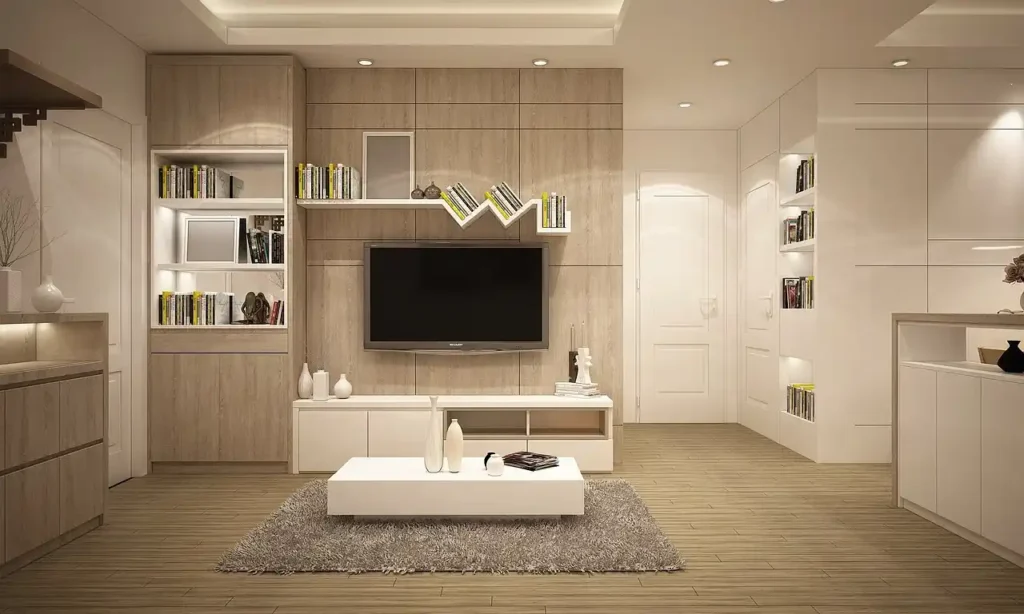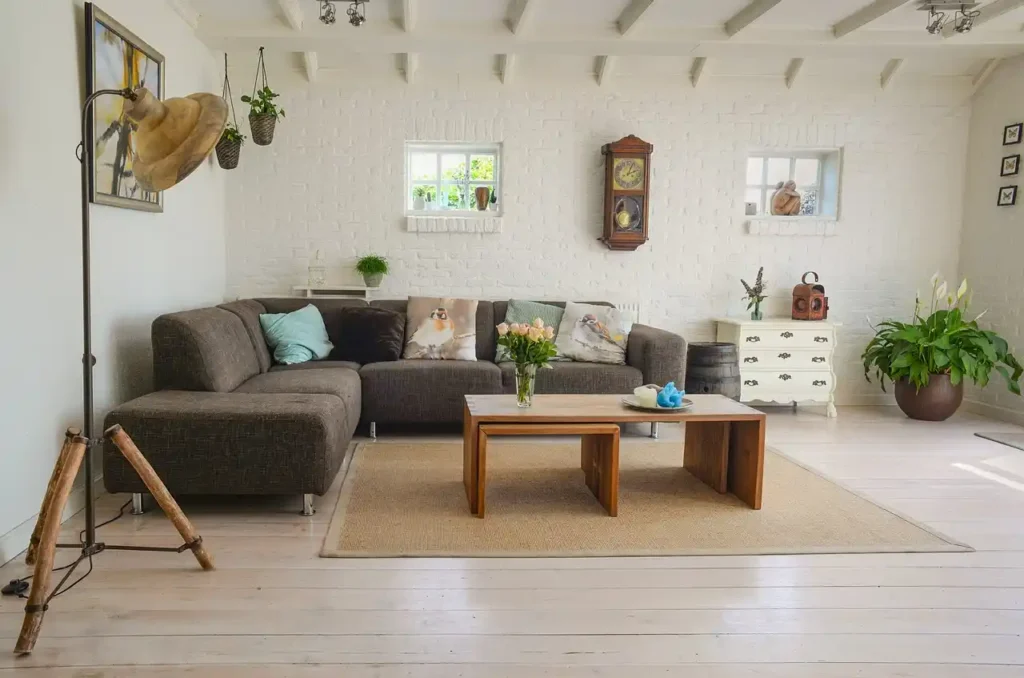In a world where daily life can feel overwhelming, creating a clean and calming home aesthetic has become more than just a trend—it’s a way to cultivate peace and balance. A thoughtfully designed space isn’t just about organization; it also enhances mental clarity and overall well-being. In this article, we’ll explore the essence of clean home aesthetics, practical ways to achieve them, and the benefits they bring to your living environment.
What is Clean Home Aesthetics?
Clean home aesthetics refer to a design philosophy that emphasizes simplicity, minimalism, and tidiness. This style focuses on creating an organized space that feels inviting and calm. Clean aesthetics are not solely about how a home looks on the surface; they also aim to foster a sense of well-being and relaxation.
Key Characteristics of Clean Home Aesthetics
- Minimalism: The essence of clean aesthetics is living with less. Minimalist design strips away unnecessary items to create an atmosphere of openness.
- Neutral Color Palette: Soft, neutral colors such as whites, creams, and soft grays often dominate clean aesthetics, adding to the sense of calm.
- Natural Light: Maximizing natural light contributes to a clean, breathable environment. Large windows and strategically placed mirrors can enhance this effect.
- Functional Spaces: Clean aesthetics prioritize utility and functionality, leading to thoughtfully designed spaces that serve a purpose while remaining pleasing to the eye.
Benefits of Clean Home Aesthetics
Adopting a clean aesthetic in your home has several noteworthy benefits, including:
1. Mental Clarity
A clutter-free space promotes mental clarity, making it easier to focus and relax. When your home is organized, your mind can operate with less distraction.
2. Enhanced Well-Being
A clean environment can boost your mood and sense of well-being. Being in a tidy, aesthetically pleasing space fosters feelings of tranquility and comfort.
3. Increased Enjoyment of Your Home
Creating a visually appealing environment enhances your experience of living in your space. You’re more likely to enjoy hosting guests and spending time at home when it feels serene and organized.
4. Improved Efficiency
When everything has its designated place, daily tasks become more streamlined. You can find items easily, allowing you to save time and energy throughout your day.
How to Achieve Clean Home Aesthetics
Now that we understand the benefits, let’s delve into practical steps for achieving a clean home aesthetic.
Declutter Regularly
Why Decluttering Matters
Decluttering is the first step in achieving a clean aesthetic. It involves removing unnecessary items from your home, which contributes to a more organized space.
Tips for Effective Decluttering
- Start Small: Tackle one room or area at a time, such as a closet or kitchen drawer.
- Use the “One In, One Out” Rule: For every new item you bring into your home, consider removing an old one.
- Create Separate Piles: Sort items into categories like keep, donate, and discard to simplify the decision-making process.
Embrace Minimalism
Design Principles of Minimalism
Minimalism emphasizes simplicity and functionality. When adopting this design ethos, focus on integrating high-quality, purposeful items into your home.
Ways to Implement Minimalist Design
- Choose Multi-Functional Furniture: Invest in pieces that serve multiple purposes, like a coffee table with hidden storage.
- Limit Decorative Items: Instead of over-decorating, select only a few meaningful decor items that resonate with you.
Utilize a Neutral Color Palette

Impact of Color on Space
The colors you choose can significantly affect the ambiance of your home. Opting for a neutral color palette fosters a sense of calm and serenity.
Choosing Your Colors
- Select Base Colors: Start with soft whites, creams, or grays as your base colors.
- Accentuate with Subtle Hues: Add pops of muted colors like sage green or dusty blue to create visual interest without overwhelming the space.
Maximize Natural Light
Benefits of Natural Light
Natural light has been shown to improve mood and productivity. It can make spaces feel larger and more inviting.
Strategies for Enhancing Natural Light
- Use Mirrors: Place mirrors opposite windows to reflect light and create a sense of depth.
- Opt for Sheer Window Treatments: Light curtains or blinds allow natural light to filter through while maintaining privacy.
Create Functional Spaces
Importance of Functionality
Functional spaces not only increase the usability of your home but also contribute to a cleaner aesthetic overall. Organized spaces work seamlessly in daily life, reducing stress.
Tips for Functional Design
- Zoning: Define specific areas within a room for designated purposes (e.g., reading nook, workspace).
- Use Smart Storage Solutions: Implement shelving, built-in cabinetry, and baskets to keep items organized.
Introduce Natural Elements
The Role of Nature in Home Design
Incorporating natural elements adds warmth and a calming effect to your home environment. Plants, wood finishes, and textiles can create a refreshing atmosphere.
Ways to Add Natural Elements
- Indoor Plants: Choose low-maintenance plants like snake plants or pothos to enhance air quality and aesthetics.
- Wood Accents: Integrate wooden furniture or accents to provide warmth and texture to your space.
Organization Strategies for Clean Home Aesthetics
Maintaining a clean home aesthetic often requires strategic organization. Here are some effective strategies you can implement:
1. Professional Decluttering Methods
Consider hiring a professional organizer who can provide expertise in streamlining your space. They can help identify what to keep and implement effective storage solutions.
2. Vertical Storage Maximization
Utilize vertical space by integrating tall shelving units or utilizing underutilized spaces like above door frames. This approach not only saves space but also adds to the clean aesthetic.
3. Seasonal Rotation Systems
Rotate seasonal items in and out of your living space. For instance, swap heavy winter blankets for lighter summer fabrics. This keeps your decor fresh while reducing clutter.
4. Hidden Storage Techniques
Consider furniture pieces that offer hidden storage, such as ottomans with compartments or beds with built-in drawers. These solutions allow you to keep essentials within reach while maintaining a tidy visual aesthetic.
5. Drawer and Closet Organization
Use dividers and organizers within drawers and closets to create designated spaces for items. This approach prevents overcrowding and keeps belongings easy to access.
6. Digital Storage Solutions
Reduce physical clutter by digitizing documents, photos, and records. Scanning important papers and storing them in the cloud minimizes paper accumulation.
Investment and Value Analysis
As you embark on creating a clean home aesthetic, consider the following aspects of investment and value:
Initial Cost Considerations
Establishing a clean aesthetic may require upfront investment in quality furniture and decor. However, consider this as an investment in your well-being and comfort.
Long-Term Benefits
Over time, the value of maintaining a clean and organized home transcends material costs. A calmer, more functional space can lead to improved mental health and productivity.
Energy Efficiency Impact
Incorporating natural materials and maximizing natural light can lead to energy savings. Reduced reliance on artificial heating and cooling contributes to lower utility bills.
Resale Value Assessment
Homes with a clean and inviting aesthetic often appeal to potential buyers, increasing resale value. Prospective buyers appreciate well-maintained spaces that feel organized.
Maintenance Costs
While investing in high-quality furniture may come with a better price tag initially, it often yields lower maintenance costs over time, requiring less frequent replacement.
Cost per Square Foot Savings
By maximizing the use of your space through organization and functionality, you optimize your living area’s cost per square foot, providing better value for your investment.
Design and Aesthetics
When implementing a clean aesthetic, consider the following design elements:

Color Schemes for Small Spaces
In small rooms, lighter shades often create a sense of openness. Soft neutrals such as beige, pastels, and whites should dominate the color scheme to foster a bright, airy feeling.
Lighting Optimization
Layer lighting sources throughout the space. Combine ambient lighting with task and accent lighting to create a well-lit environment conducive to relaxation and functionality.
Material Selection Guide
Choose materials that align with the clean aesthetic without overwhelming your space. Lightweight fabrics, natural wood, and metal accents blend well in minimalist environments.
Visual Space Enhancement
Incorporate reflective surfaces or light-colored accessories to enhance the visual perception of space. This technique promotes brightness and makes rooms feel larger.
Pattern and Texture Choices
Introduce subtle patterns and textures thoughtfully. Avoid bold prints that can detract from a clean aesthetic. Instead, consider soft, natural fabrics and textures that provide warmth without overwhelming the senses.
Real-Life Transformations
Studio Apartment Solutions
In studio apartments, clean aesthetics are paramount due to limited space. Implementing multifunctional furniture that serves dual purposes can maximize both functionality and style.
Family Room Makeovers
For family rooms, a clean aesthetic can be achieved through organized zones. Using built-in storage and selecting simple, comfortable furniture can help maintain an inviting atmosphere.
Guest Room Conversions
Transforming a guest room into a clean aesthetic can make visitors feel welcome. Use neutral color palettes, minimalist decor, and cozy bedding to create a serene space.
Professional Case Studies
Learn from design professionals who specialize in clean aesthetics. Many showcase transformations in their portfolios, emphasizing the impact of thoughtful design.
Implementation Guide
Measuring Your Space
Start creating your clean aesthetic by accurately measuring your living space. Consider furniture height, width, and depth to ensure a proportional fit.
Planning and Layout Tools
Utilize design software or online room planners to visualize your intended layout. This can provide clarity on how to best utilize available space.
Installation Considerations
Prepare for the installation of new furniture. Ensure that you have the necessary tools and assistance for larger pieces, allowing for a smooth transition to your new aesthetic.
Professional vs. DIY Assembly
Evaluate whether you prefer to tackle furniture assembly as a DIY project or hire professionals. Some pieces may require specific skills for optimal assembly.
Safety Guidelines
Prioritize safety during your home transformation. Secure heavy furniture pieces to the wall and avoid overcrowding for a safer living environment.
Maintenance and Longevity
Cleaning Best Practices
Regular cleaning is essential for maintaining a clean aesthetic. Establish a routine for dusting, vacuuming, and wiping down surfaces to keep your home in pristine condition.
Regular Maintenance Schedule
Create a schedule for regular upkeep of your furniture and decor to ensure longevity. This could include checking for wear and tear and refreshing any fading textiles.
Common Repair Issues
Monitor your space for common issues, such as scuffed furniture or peeling paint. Addressing problems promptly can prevent them from becoming more significant.
When to Replace or Upgrade
Recognize when it’s time to invest in new furniture or decor. If certain pieces no longer align with your aesthetic or functionality, consider updating them.
Warranty Considerations
When purchasing new furniture, always check for warranty offers. This can provide peace of mind, allowing you to address any potential issues without incurring substantial costs.
Future Trends and Innovations
Emerging Technologies
Expect to see a rise in smart home technology that enhances clean aesthetics. Devices that integrate seamlessly into your home decor while promoting functionality are set to grow in popularity.
Sustainable Solutions
Sustainability is a growing trend in home design. Eco-friendly materials and furnishings are not only clean in appearance but also minimize environmental impact.
Smart Integration
Incorporating smart systems allows for efficient, easy control of your home’s ambiance. Think about lighting systems that can be controlled with your smartphone, promoting a clean and organized home environment.
Market Predictions
As more individuals prioritize simplicity and wellness, the demand for clean home aesthetics is expected to grow. This trend showcases a collective shift towards intentional living spaces.
Customization Options
Furniture companies are increasingly offering customizable options that allow consumers to tailor pieces based on their aesthetic and functional needs.
Conclusion
Creating a clean home aesthetic is a holistic approach to designing spaces that foster clarity, comfort, and beauty. By embracing minimalist principles, selecting a neutral color palette, and utilizing functional furniture, you can cultivate an environment that enhances your overall well-being. An investment in clean aesthetics not only improves your living space but promotes a healthier lifestyle.
Start your journey toward a serene and inviting home today! Discover the impact of cleanliness and organization on your life, and enjoy the transformative benefits of a clean and calm aesthetic.
For more decor tips and design inspiration, visit Houzz, a trusted source for home improvement and decor ideas.

